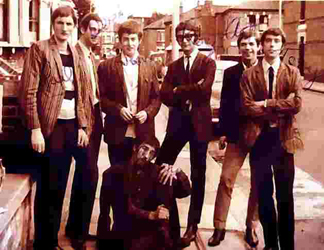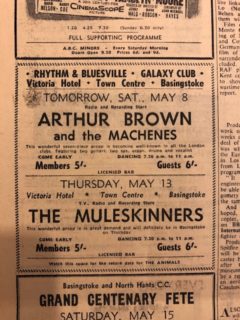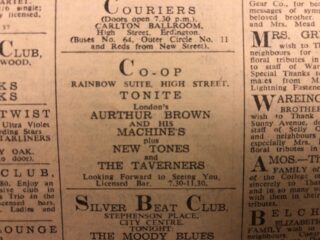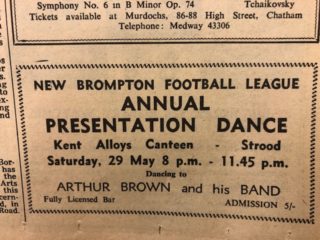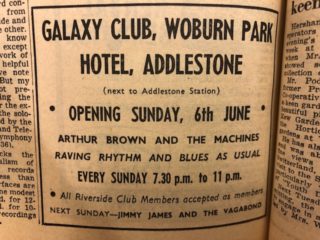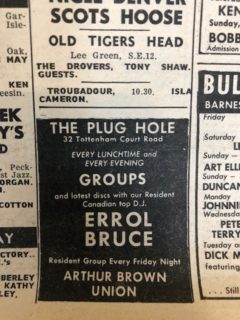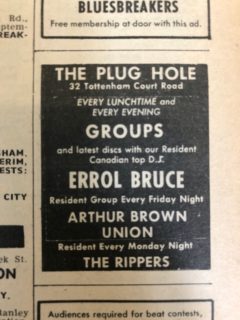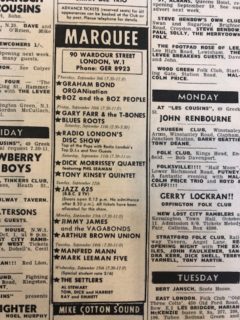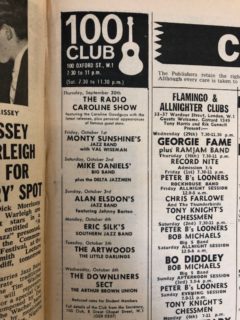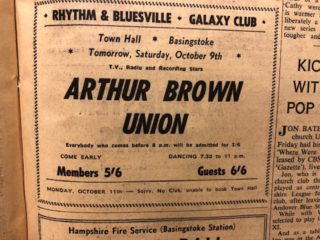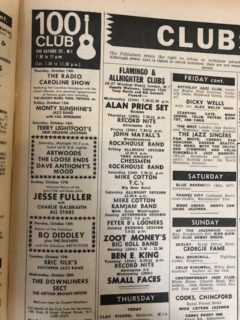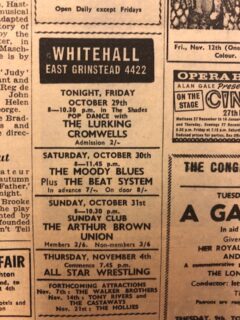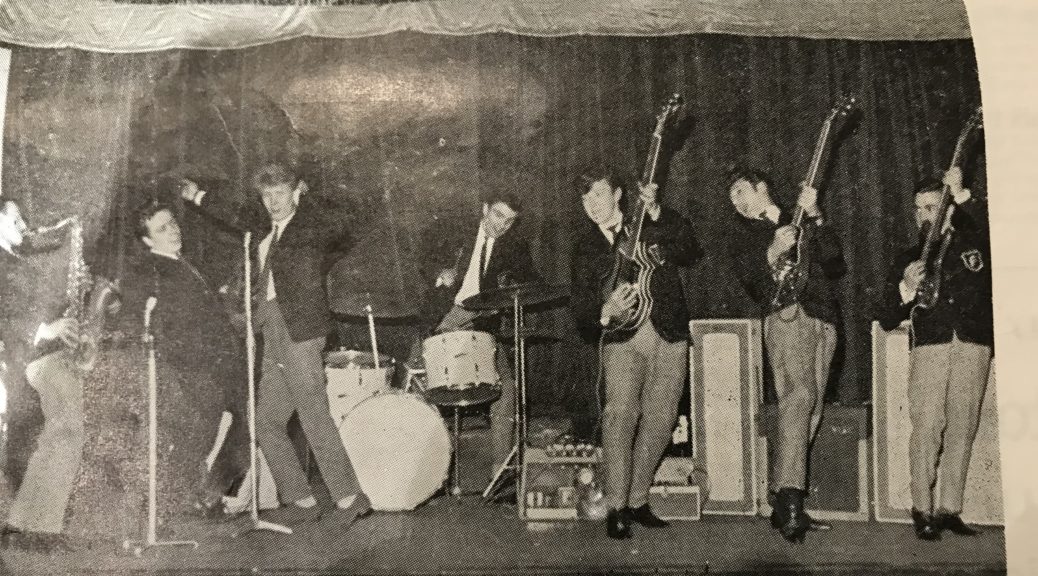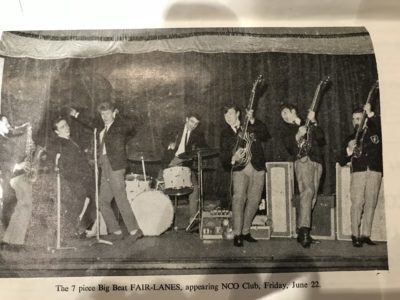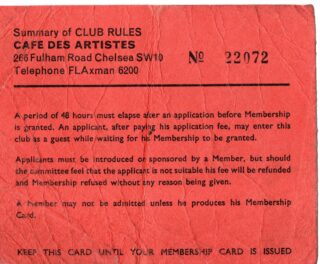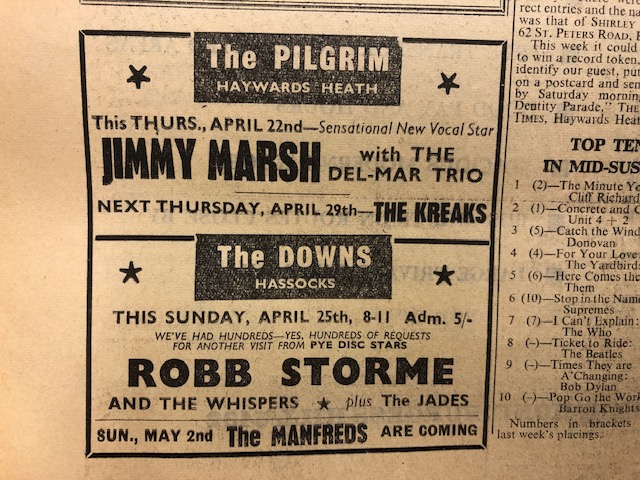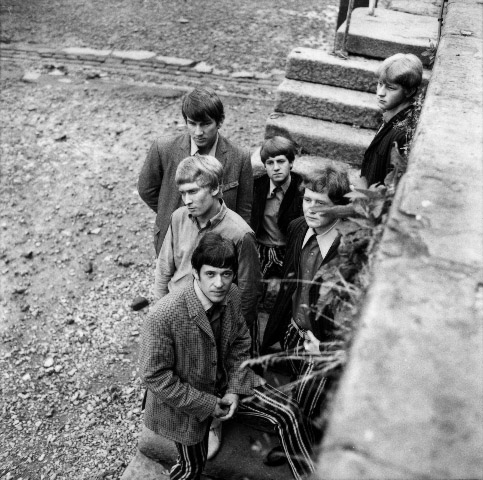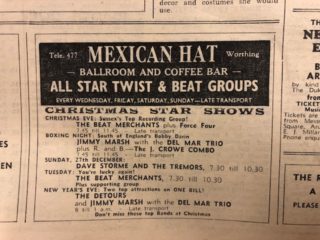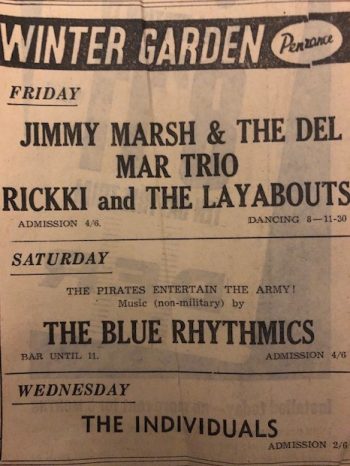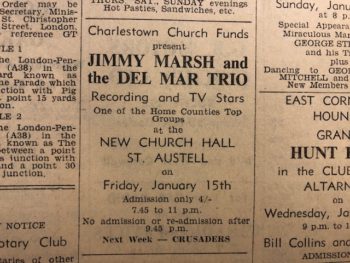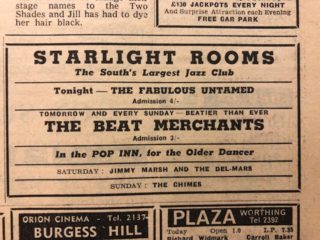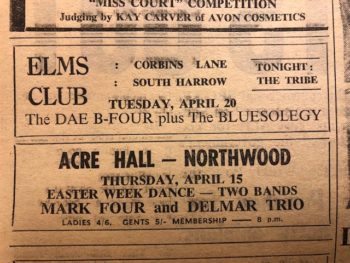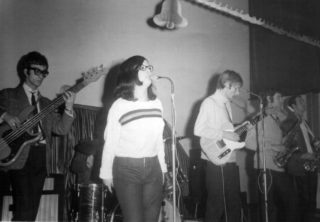
Dave Terry (aka Elmer Gantry) (lead vocals)
Heather Swinson (vocals)
Paul Brett (guitar)
Art Regis (keyboards)
Tony Priestland (alto sax)
Derek Griffiths (tenor sax)
Roy Stacey (bass)
Jim Toomey (drums)
When Arthur Brown left The Union around December 1965, the group brought in blues singer Dave Terry (aka Elmer Gantry), who’d previously worked with Stacey, Regis and Swinson in Barnes R&B band, The Impacts.
After The Impacts split up, Dave Terry worked on the folk/blues circuit with Simon Lawrence. The pair had a regular gig at Studio 51 in Leicester Square and, according to Melody Maker, played a gig there as late as 2 December 1965.
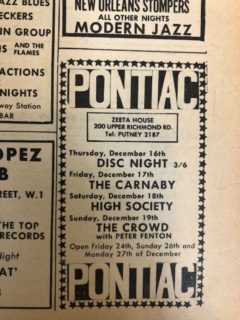
Gantry recalls that The Union worked as The High Society for a while. According to Melody Maker, The High Society played at the Pontiac in Putney on 18 December 1965 and this would have been the same band. The High Society also performed at the Galaxy (in Basingstoke Town Hall) on 19 February 1966.
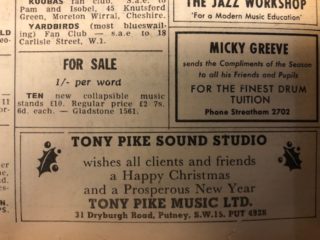
As The Union, the band recorded two tracks at Tony Pike’s studio in Putney – covers of “In the Midnight Hour” and “Shake” in spring 1966 which have recently surfaced on Paul Brett’s anthology CD Stone Survivor.
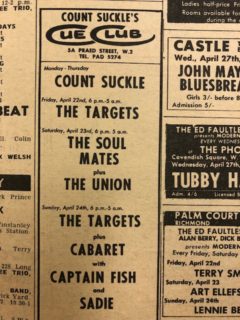
Soon after Dave Terry left, followed in quick succession by Heather Swinson and Derek Griffiths.
Terry joined The Five Proud Walkers in June 1966 and remained with this band as they morphed into Elmer Gantry’s Velvet Opera. During this period, he changed his name to Elmer Gantry.
In late 1968/early 1969, after splitting with The Velvet Opera, Gantry recruited members of The Downliners Sect – Johnny Sutton, Paul Martinez, Bob Taylor and Nat Dumaine to become The Elmer Gantry Band. Later, in the 1970s he fronted Stretch and later still, recorded with The Alan Parsons Project, Jon Lord, Cozy Powell among others.
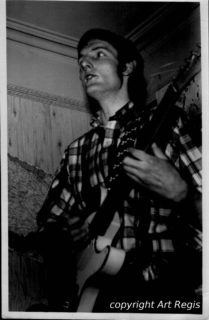
Also in June 1966, Paul Brett left to re-join Arthur Brown and the second incarnation of his Paris-based Arthur Brown Set. The group moved on to work in Spain but by October Brett had returned to England where he subsequently joined The Overlanders alongside Laurie Mason (lead vocals); Paul Petts (bass); Ian Griffiths (rhythm guitar); and Brian Middleditch (drums). Middleditch was replaced by Phil Wainman (ex-Hamilton & The Hamilton Movement) around March 1967 for a few months then Vic Lythgoe before splitting in August/September.
Brett then played with The Warren Davis Monday Band from September-December 1967; Tintern Abbey from January-June 1968; (Elmer Gantry’s) Velvet Opera from June 1968-spring 1970 and later Fire and Paul Brett’s Sage.
With Brett gone, Stacey remembers that the band recruited an Australian guitarist called Graham Wilson.
Stacey recalls that the remaining members of The Union – guitarist Graham Wilson; keyboard player Art Regis; sax player Tony Priestland; and drummer Jim Toomey changed name to The Uptown Band and worked at the Cromwellian before linking up with Brett’s former band mate from The SW4, Ralph Denyer when the future Blonde on Blonde guitarist/singer split with his previous outfit, The Rockhouse Band in July.
Thanks to Elmer Gantry (aka Dave Terry), Roy Stacey and Paul Brett for helping with the story
Copyright © Nick Warburton. All Rights Reserved. No part of this article may be reproduced or transmitted in any form or by any means, without prior permission from the author.

